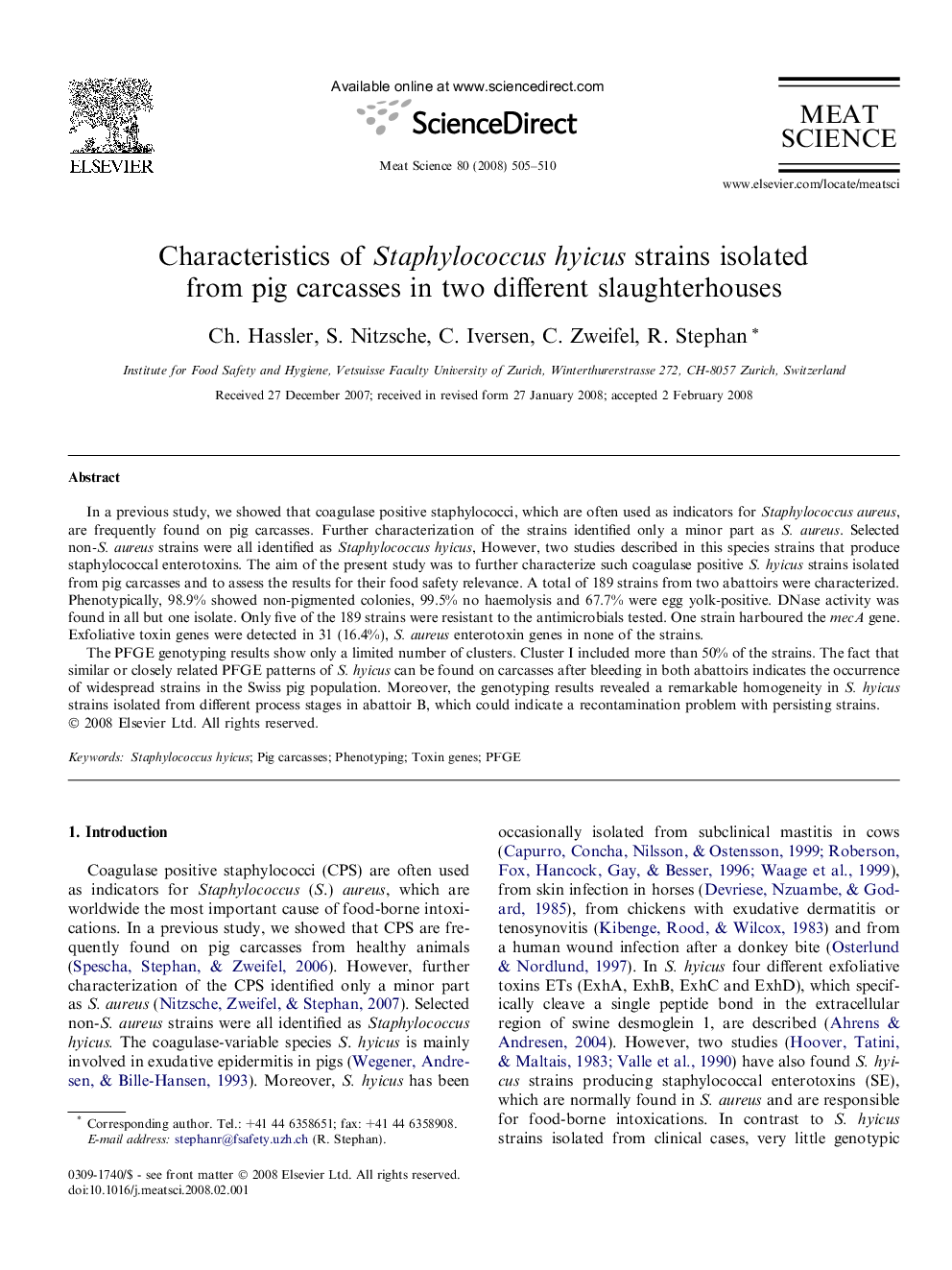| Article ID | Journal | Published Year | Pages | File Type |
|---|---|---|---|---|
| 2451455 | Meat Science | 2008 | 6 Pages |
In a previous study, we showed that coagulase positive staphylococci, which are often used as indicators for Staphylococcus aureus, are frequently found on pig carcasses. Further characterization of the strains identified only a minor part as S. aureus. Selected non-S. aureus strains were all identified as Staphylococcus hyicus, However, two studies described in this species strains that produce staphylococcal enterotoxins. The aim of the present study was to further characterize such coagulase positive S. hyicus strains isolated from pig carcasses and to assess the results for their food safety relevance. A total of 189 strains from two abattoirs were characterized. Phenotypically, 98.9% showed non-pigmented colonies, 99.5% no haemolysis and 67.7% were egg yolk-positive. DNase activity was found in all but one isolate. Only five of the 189 strains were resistant to the antimicrobials tested. One strain harboured the mecA gene. Exfoliative toxin genes were detected in 31 (16.4%), S. aureus enterotoxin genes in none of the strains.The PFGE genotyping results show only a limited number of clusters. Cluster I included more than 50% of the strains. The fact that similar or closely related PFGE patterns of S. hyicus can be found on carcasses after bleeding in both abattoirs indicates the occurrence of widespread strains in the Swiss pig population. Moreover, the genotyping results revealed a remarkable homogeneity in S. hyicus strains isolated from different process stages in abattoir B, which could indicate a recontamination problem with persisting strains.
